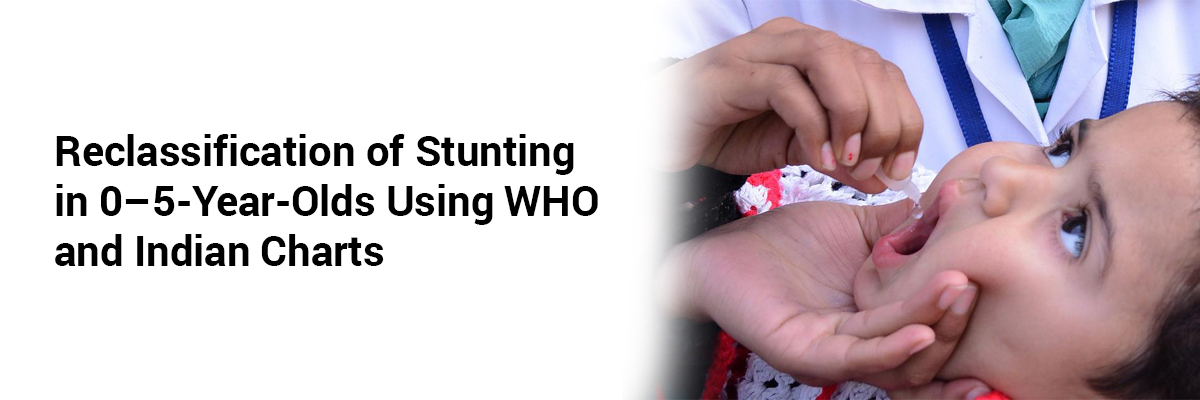
 IJCP Editorial Team
IJCP Editorial Team
Reclassification of Stunting in 0–5-Year-Olds Using WHO and Indian Charts
A study published in the Indian Journal of Pediatrics aimed to classify children under five into four height categories—standard, short, severely short, and tall—using the WHO 2006 and the Indian 2019 synthetic growth charts. It also compared how the proportion of stunted children varied depending on the chart.
The study included 1,557 healthy children (795 boys) aged 0–5 years who attended outpatient clinics for routine vaccinations. Z-scores were calculated using both sets of charts to classify the children into height categories.
- According to WHO charts, 73.5% of children were classified as normal, compared to 85.4% in the Indian 2019 synthetic charts.
- The mean height-for-age Z-score was -0.85 (±1.62) with WHO charts and -0.37 (±1.38) with Indian synthetic charts.
- The prevalence of short stature was 15.03%, and severe short stature was 7.51%, using WHO charts, which reduced to 7.77% and 2.38%, respectively, when using the Indian synthetic charts.
- WHO charts identified 22.54% of children as stunted (short + severely short), while Indian synthetic charts identified 10.15%, indicating a 12.4% overdiagnosis by WHO standards.
The study showed that WHO growth charts may overestimate the prevalence of stunting in a normal population of under-five children. Using regional growth charts could help reduce unnecessary evaluations in healthy children.
(Source: Indian J Pediatr (2025). https://doi.org/10.1007/s12098-025-05437-6)

IJCP Editorial Team
Comprising seasoned professionals and experts from the medical field, the IJCP editorial team is dedicated to delivering timely and accurate content and thriving to provide attention-grabbing information for the readers. What sets them apart are their diverse expertise, spanning academia, research, and clinical practice, and their dedication to upholding the highest standards of quality and integrity. With a wealth of experience and a commitment to excellence, the IJCP editorial team strives to provide valuable perspectives, the latest trends, and in-depth analyses across various medical domains, all in a way that keeps you interested and engaged.




















Please login to comment on this article